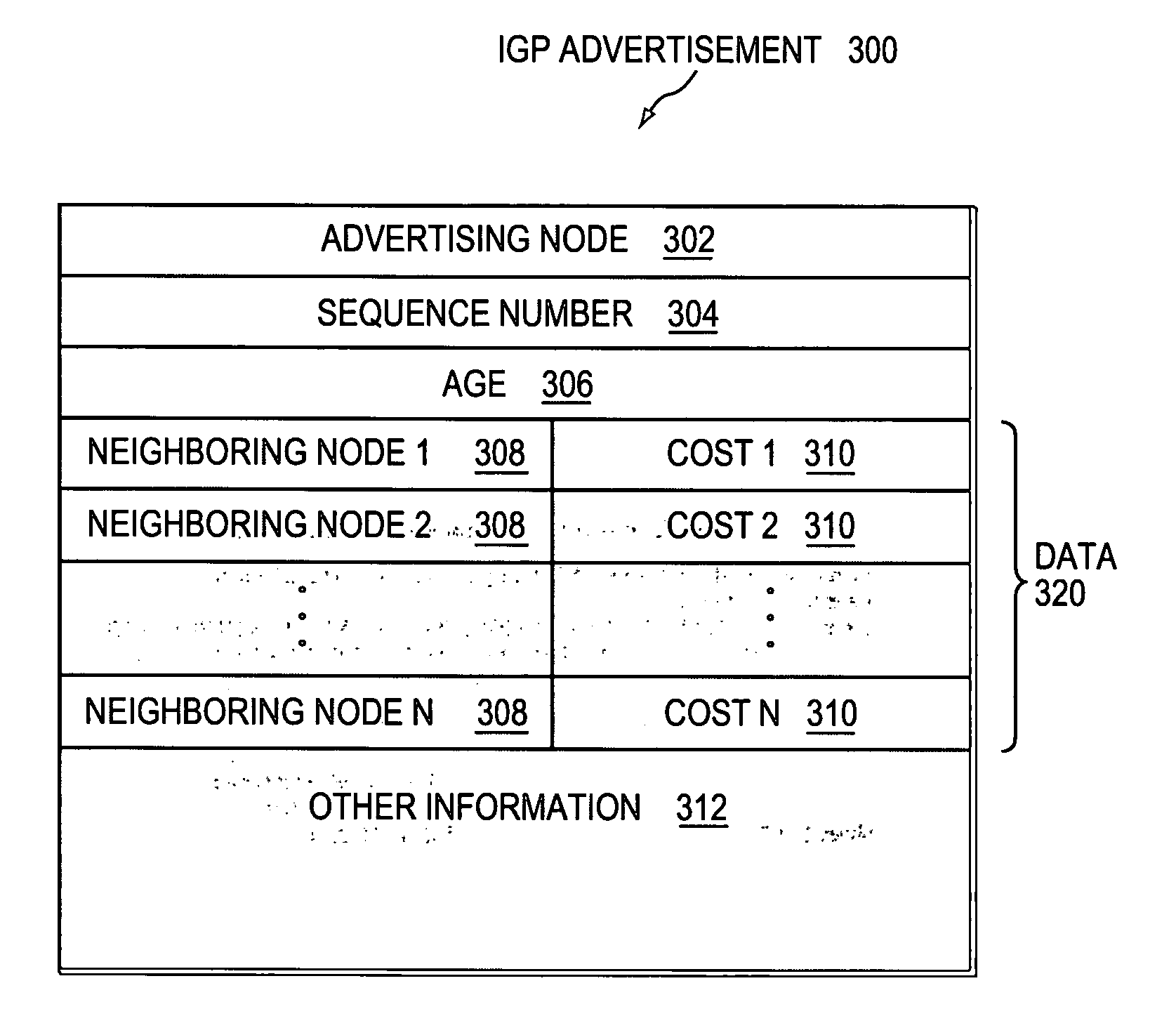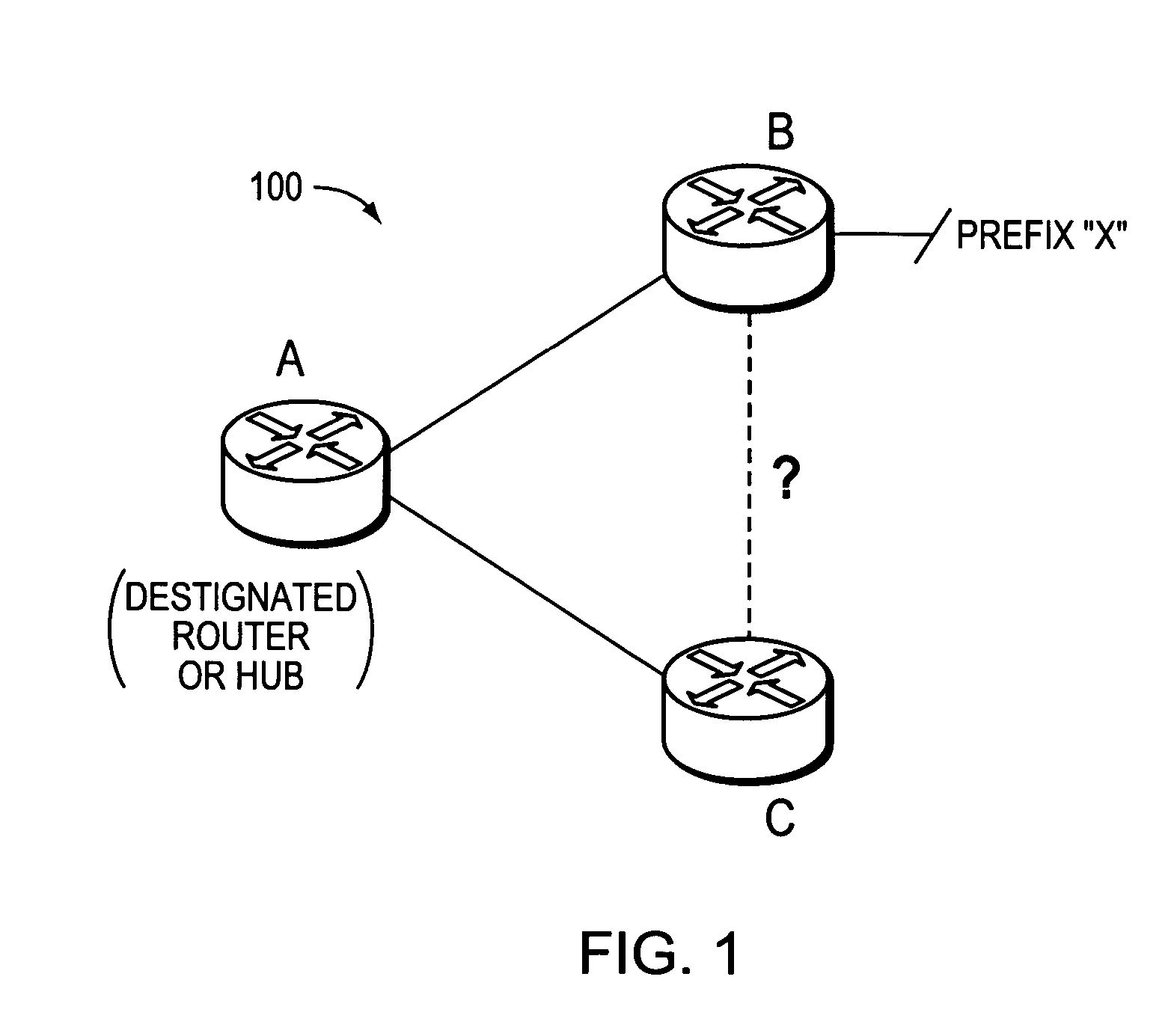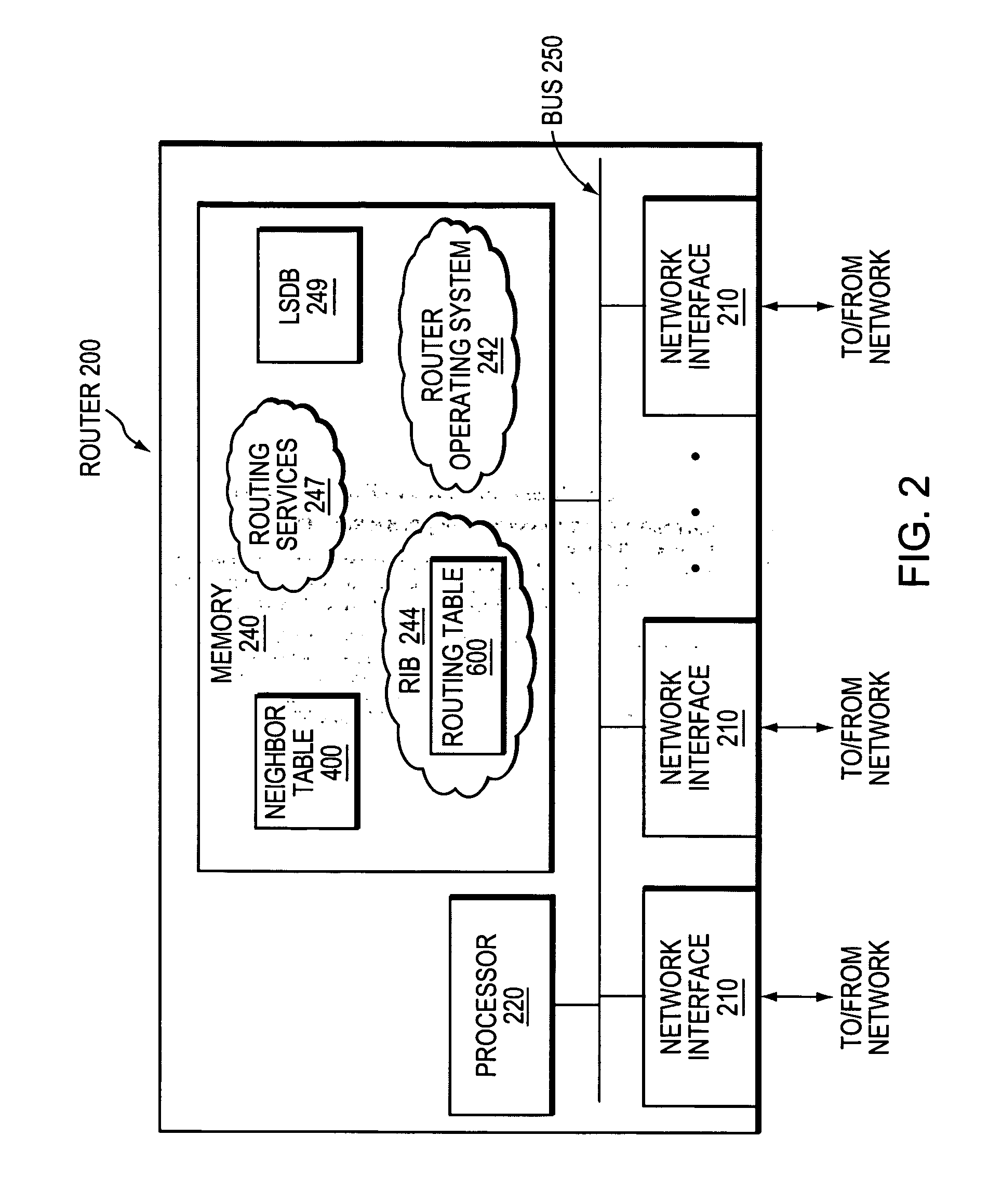Dynamically configuring and verifying routing information of broadcast networks using link state protocols in a computer network
a technology of link state protocol and computer network, applied in the field of dynamically configuring and verifying routing information of broadcast network using link state protocol in the computer network, can solve the problems of link state protocol use, burdensome management of interconnected computer network,
- Summary
- Abstract
- Description
- Claims
- Application Information
AI Technical Summary
Benefits of technology
Problems solved by technology
Method used
Image
Examples
Embodiment Construction
[0029]FIG. 1 is a schematic block diagram of an exemplary computer network 100 that may be advantageously used with the present invention. The network 100 comprises a plurality of interconnected network nodes, such as routers A, B, and C. Illustratively, the routers may be interconnected by one or more links, such as, e.g., over local area network (LAN) links, wireless LANs, etc., to form the network 100. Each router may be used to reach one or more destination address prefixes, such as prefix X from router B as shown. Notably, network 100 may be configured as a full mesh network, where each router is interconnected to each and every other router of the network, or may be configured as a partial mesh network, such as a hub-and-spoke network, as will be understood by those skilled in the art. Those skilled in the art will understand that any number of nodes, links, prefixes, etc., may be used in the computer network 100 and connected in a variety of ways, and that the view shown here...
PUM
 Login to View More
Login to View More Abstract
Description
Claims
Application Information
 Login to View More
Login to View More - R&D
- Intellectual Property
- Life Sciences
- Materials
- Tech Scout
- Unparalleled Data Quality
- Higher Quality Content
- 60% Fewer Hallucinations
Browse by: Latest US Patents, China's latest patents, Technical Efficacy Thesaurus, Application Domain, Technology Topic, Popular Technical Reports.
© 2025 PatSnap. All rights reserved.Legal|Privacy policy|Modern Slavery Act Transparency Statement|Sitemap|About US| Contact US: help@patsnap.com



